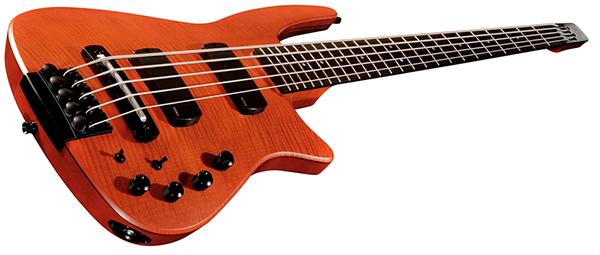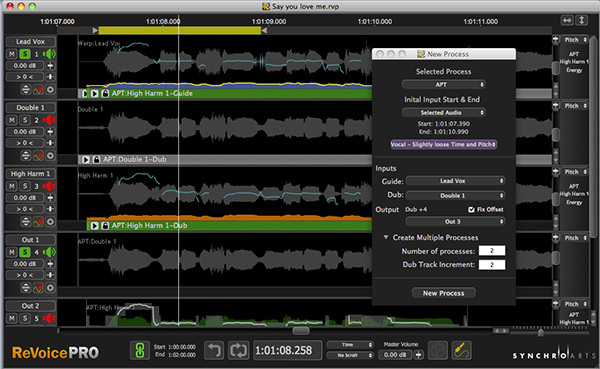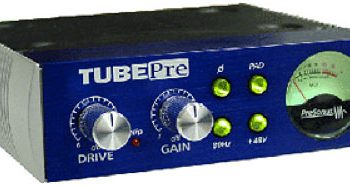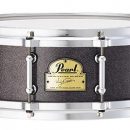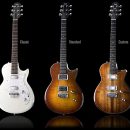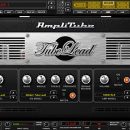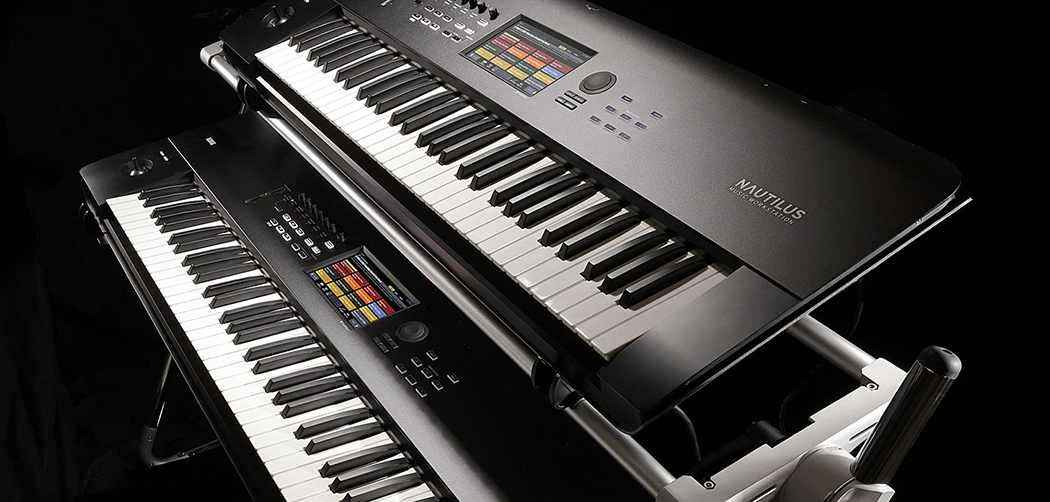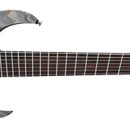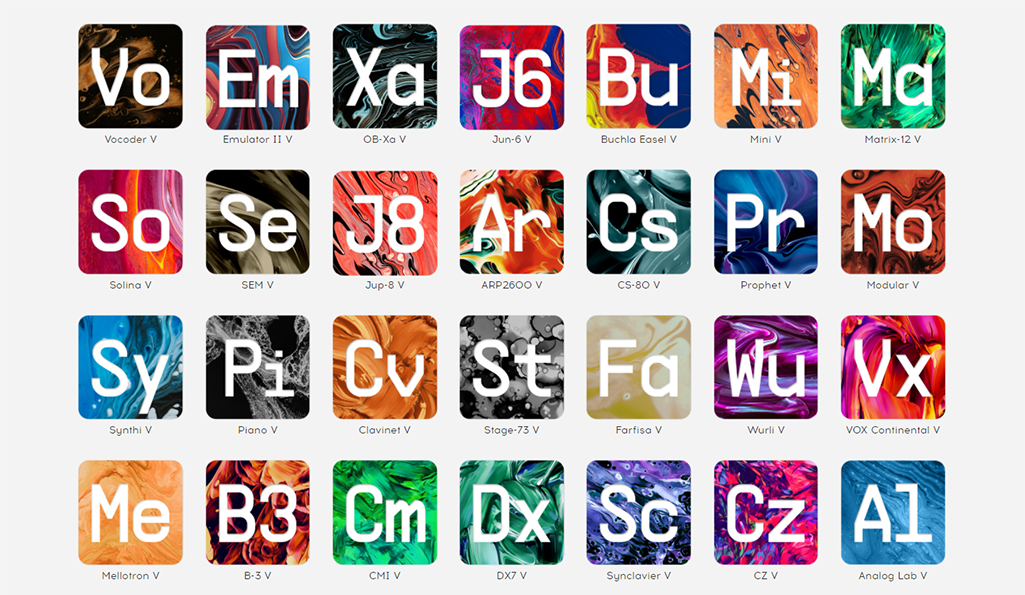 Korg rack-mount tuners are ubiquitous fixtures in professional guitar and bass rigs. For almost three decades, who hasn’t noticed the ever watchful, red, eye of a Cylon Centurian darting back and forth in an equipment rack somewhere on stage? Let’s get the ‘80s nostalgia conflict out of the way up front: the tuner took a page out of Battlestar Galactica, not Kitt’s hood ornament on Night Rider.
Korg rack-mount tuners are ubiquitous fixtures in professional guitar and bass rigs. For almost three decades, who hasn’t noticed the ever watchful, red, eye of a Cylon Centurian darting back and forth in an equipment rack somewhere on stage? Let’s get the ‘80s nostalgia conflict out of the way up front: the tuner took a page out of Battlestar Galactica, not Kitt’s hood ornament on Night Rider.
For a few years, Korg stopped producing rack-mount tuners, but happily, they have returned to the rack (and tabletop—more on that later), and the significantly reimagined Pitchblack Pro tuner incorporates a host of tweaks that really do improve upon the original, even if we can no longer look at our guitar rig and proclaim, “By your command.”
| Category | Value | Rating |
| Features | 20% | |
| Usability | 25% | |
| Sound | 25% | |
| Documentation & Support | 10% | |
| Price | 20% | |
| OVERALL RATING = 3.8 Stars, which earns it a WIHO Award! 3.6 stars or better: Outstanding, WIHO Award 3 stars or better: Worth considering 2 stars or better: Suited to specific needs 1 star or less: Not recommended |
||
Features
The first two things you’ll notice upon unpacking a Pitchblack Pro tuner are that it’s got a sleek, black finish, and that it weighs nearly nothing, being housed in a very compact/shallow, plastic casing vs. the original tuners’ aluminum chassis.
Turning it on, however, reveals that this is not your father’s Korg DTR tuner. Yes, there’s an LED indicator for the note being played, but in place of the oscillating red dot is a new 3D visual display. Even if you don’t need an instrument tuner in your rig, you’ll still want the Pitchblack Pro in your rack, because assuming anyone wants to listen to your playing in the first place, the visual flair this tuner brings to your guitar or bass rig is going to turn heads.
Though our first reaction to the Pitchblack Pro’s plastic casing was that Korg must have cut corners on materials and therefore sacrificed quality, after reflecting on how the unit is most likely going to be used—in a rack, as opposed to being tossed in a gig bag, we agreed that this material choice makes sense on many fronts. Korg touts the Pitchblack Pro as weighing only 0.8lbs (363g) compared to the 3.1lbs (1.4kg) DTR-1000 and 2000 models—nice! It’s nice to find a piece of gear that adds virtually no perceptible weight to your rig. The plastic also reduces the risk of noise-inducing group loops between the tuner and your rack rails, too!
When it finally comes time to tune your instrument, the Pitchblack Pro offers three modes of tuning: Meter, Strobe, and Half-Strobe. Meter is the classic tuning mode in which an LED indicator moves towards the center point as you tune closer to pitch, and the direction of the indicators shows whether or not you are sharp or flat. Strobe mode involves a flow of LED arrows on the entire screen from either the left or right side that slow in speed as your tuning gets closer to pitch, while half-strobe is a bit more involved and uses the same flowing pattern from either the right or left side while also using the center LED, similar to the standard mode. Regardless of mode, the note you are playing is displayed to the left of the display in its own secondary display area.
A detection accuracy of +/- 1 cent allows for precise tuning, and the unit detects pitch from 20.60Hz to 4.2kHz (C0 to E8 in piano notes), which should allow for accurate tuning across a fairly wide range. The unit can also be calibrated anywhere from 436-445Hz in one-Hz intervals, useful for guitarists and bassists playing in an orchestral setting.
 One of the most essential features carries over from the classic models: the front panel input jack automatically bypasses the secondary, rear-panel input. When a tuner is installed in a typical guitar or bass rig, the connection is almost always made to the rear panel. With this design, your tech can walk up to the rig with an instrument cable in hand, plug in various instruments for pre-show tuning, and not have to worry about dismantling any cabling in the back of your rig. As soon as they unplug from the front of the tuner, your signal automatically flows again through the rear connection to your rig.
One of the most essential features carries over from the classic models: the front panel input jack automatically bypasses the secondary, rear-panel input. When a tuner is installed in a typical guitar or bass rig, the connection is almost always made to the rear panel. With this design, your tech can walk up to the rig with an instrument cable in hand, plug in various instruments for pre-show tuning, and not have to worry about dismantling any cabling in the back of your rig. As soon as they unplug from the front of the tuner, your signal automatically flows again through the rear connection to your rig.
The unit also retains a useful cable test feature on the front panel, with bright LED symbols to indicate whether the cable being tested is successfully passing a signal or is experiencing a fault.
The Pitchblack Pro output is buffered, and an output mute feature can be activated via any standard footswitch or from a front-panel button.
Power is supplied via a weighs-nearly-nothing, 9V DC, center positive, wall wart (included), but you should alternately be able to power the tuner from universal pedal power supplies that you may have installed in your rig.
The Pitchblack Pro is uniquely designed for both rack-mount and desktop use. The rack ears are detachable from the sides and can be attached to the bottom of the unit instead, where they function as a tilt stand for use on your workbench.

Usability
The Korg Pitchblack Pro tuner is a breeze to use, and it truly improves upon the classic models with the fantastic, 3D display. We found it super-easy to view the Pitchblack Pro from across the studio or stage in all three of its operating modes. The 3D quality of the display makes it easy to view (and use) at random angles—not just head-on.
Different players prefer different tuner interfaces, and the Pitchblack Pro offers three. Those of us coming from a Korg tuner legacy favored the default view, where cascading vertical lines converge on the center mark as you get closer to pitch, with handy color coding that makes it obvious when you arrive at pitch. A secondary display to the left of the large graphical display showed the note that we were tuning. We’ve always loved Korg’s large note display—anyone who plays with a capo or alternate tunings can appreciate hitting a random note on the fretboard and glancing at the tuner to instantly see what note they stumbled upon.
Editors on our team who come from the Peterson tuner camp really appreciated Korg’s take on strobe-style tuning, and found it extremely easy to use this method of fast and slow moving lines on the display to tune their guitars from a distance. As we tuned to pitch, the flow of the display slowed down until stopped at pitch, while the direction of the flow indicated whether we were sharp or flat.
A third tuning mode combined both of the aforementioned methods, and was equally appealing to players who favor the stroboscopic view, though we didn’t find it specifically more or less compelling for our general use.
We tested the Pitchblack Pro with a variety of instruments including electric guitars, electric basses, and acoustic guitars, tuned to pitch as well as to a variety of alternate tunings including some very low drops.
The rack ears deserve special mention. Rather than screwing into the sides or bottom of the unit, the clever design allowed us to simply clip the rack ears into the sides of the unit for mounting in a standard 19” equipment rack, or alternately we could clip the ears into the bottom of the tuner (close to the face of the tuner), which created a built-in kickstand of sorts that angled the tuner up for use on our workbench. Guitar techs will love this little detail.
Our only gripe with the new tuner has to do with the power button. In place of a solid, mechanical switch is a new soft toggle power button… which doesn’t maintain its On/Off state when powered down! As a result, every time you power up your guitar rig, you have to remember to turn the tuner on separately. If anything, this could be the single compelling reason that guitar techs choose to keep the classic Korg tuners in their artists’ rigs in lieu of upgrading.
Sound
There’s not much to say other than if you have to run the Pitchblack Pro tuner in-line in your audio signal, your tone will be just as it was before… running through a buffer. Vintage players may lament the lack of true bypass, but really, with any tuner like this, it belongs in your rack, connected to a dedicated Tuner Out line or a bypassable audio loop. (Korg makes pedal versions of the Pitchblack tuners for smaller rigs.)
Documentation and Product Support
In addition to a nice introduction video, the included documentation was thorough and easy to read.
Price
The Korg Pitchblack Pro sells for approximately $100. It offers an outstanding value, as you can actually spend more than that for a used Korg DTR-series tuner. Unless you really, really love Battlestar Galactica (original series), we’d skip the older units and purchase this one. In fact… we just did!
Contact Information
Korg
www.korg.com
| Evaluation Short-List |
|


